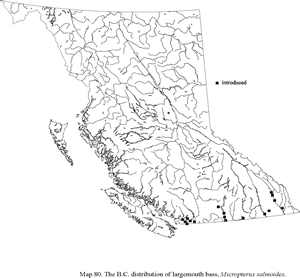Inhabits clear, vegetated lakes, ponds, swamps. Also in backwaters and pools of creeks and rivers (Ref. 5723). Prefers quiet, clear water and over-grown banks. Adults feed on fishes, crayfish and frogs; young feed on crustaceans, insects and small fishes. Sometimes cannibalistic. Does not feed during spawning; as well as when the water temperature is below 5°C and above 37°C (Ref. 30578). Popular game fish in North America. Preyed upon by herons, bitterns, and kingfishers (Ref. 1998).
Source:
FishBase. Page, L.M. and B.M. Burr 1991 A field guide to freshwater fishes of North America north of Mexico. Houghton Mifflin Company, Boston. 432 p.
